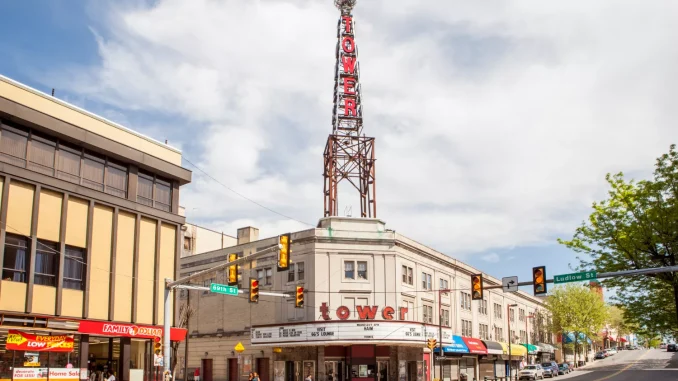
Not every retail story centers on distress. Some corridors evolve quietly, blending strategic repositioning with organic tenant growth. The 69th Street District in Upper Darby, Pennsylvania, owned by Ashkenazy Acquisition Corporation, offers a compelling example.
Nestled just outside Philadelphia, this historic strip long served local needs. As shoppers now prize walkability and convenience, the district balances grocery staples, off-price national names and neighborhood dining in ways that feel fresh—and genuinely useful.
Why 69th Street District Matters
-
Transit-driven traffic. The SEPTA 69th Street Transportation Center funnels thousands of commuters past storefronts each day.
-
Balanced tenant mix. The Fresh Grocer covers essentials, Burlington and T.J. Maxx draw bargain hunters, and Baba’s Halal adds local flavor.
-
Adaptive use. Vacant bays often convert into pop-ups or community event space, keeping streetscapes lively.
Stroll these blocks, and you’ll notice a quiet confidence. Rather than chase mammoth footprints, management pilots new concepts in mid-sized spaces, then scales what resonates. That agile approach keeps vacancies low and the retail roster in tune with local tastes.
Q1 2025 Philadelphia CRE Market Snapshot
As of March 31, 2025, trends diverge sharply across sectors:
- Office: Leasing activity reached nearly 1.1 million SF in Q1 2025—a 38.2 % QoQ increase—driven by law firms and financial services in the CBD. Savills
- Retail: The Greater Philadelphia retail market posted slight negative net absorption in Q1 2025, creating opportunities for expanding brands to take prime storefronts. CBRE Commercial Real Estate Services
- Industrial: The regional industrial vacancy rate rose from 7.1 % to 7.7 %, absorption turned negative for the first time in four quarters, and average asking rents eased to $11.14 NNN. colliers.com
These figures underscore that today’s retail winners depend more on location, transit access and nimble tenant curation than on sheer square footage.
Lessons for Emerging Suburban Corridors
Savvy investors now look beyond core downtowns to find stable returns in vibrant suburban hubs. 69th Street illustrates three winning strategies:
-
Transit-linked placemaking. Anchor around established commuter nodes.
-
Essential-plus curation. Pair everyday retailers with neighborhood food and lifestyle concepts.
-
Adaptive reinvestment. Refresh existing buildings and public areas instead of building anew.
This isn’t a cookie-cutter mall; it’s a patchwork of small-scale upgrades and community-focused activations that keep locals—and newcomers—coming back.
A Glimpse at Tomorrow’s Retail Playbook
Tomorrow’s standout corridors won’t hinge on raw square footage but on the daily habits they support. Look for streets where transit riders spill directly into storefronts, where office teams slip out for a quick lunch and where neighbors gather at pop-up markets on the weekend. Give landlords the freedom to pilot new concepts in mid-sized bays—local makers one day, rotating food vendors the next—then back the ideas that stick.
Layer in community activations—think block-party art walks or fitness meet-ups—and seamless transit integration, like bike-share docks at shop entrances or branded wayfinding from the nearest station. Those elements don’t just help corridors weather shifting markets; they position them to lead the next wave of retail evolution.
To learn more about 69th Street District, a Ben Ashkenazy property, go to: https://benashkenazy-69thstreet-district.s3.amazonaws.com/index.html
